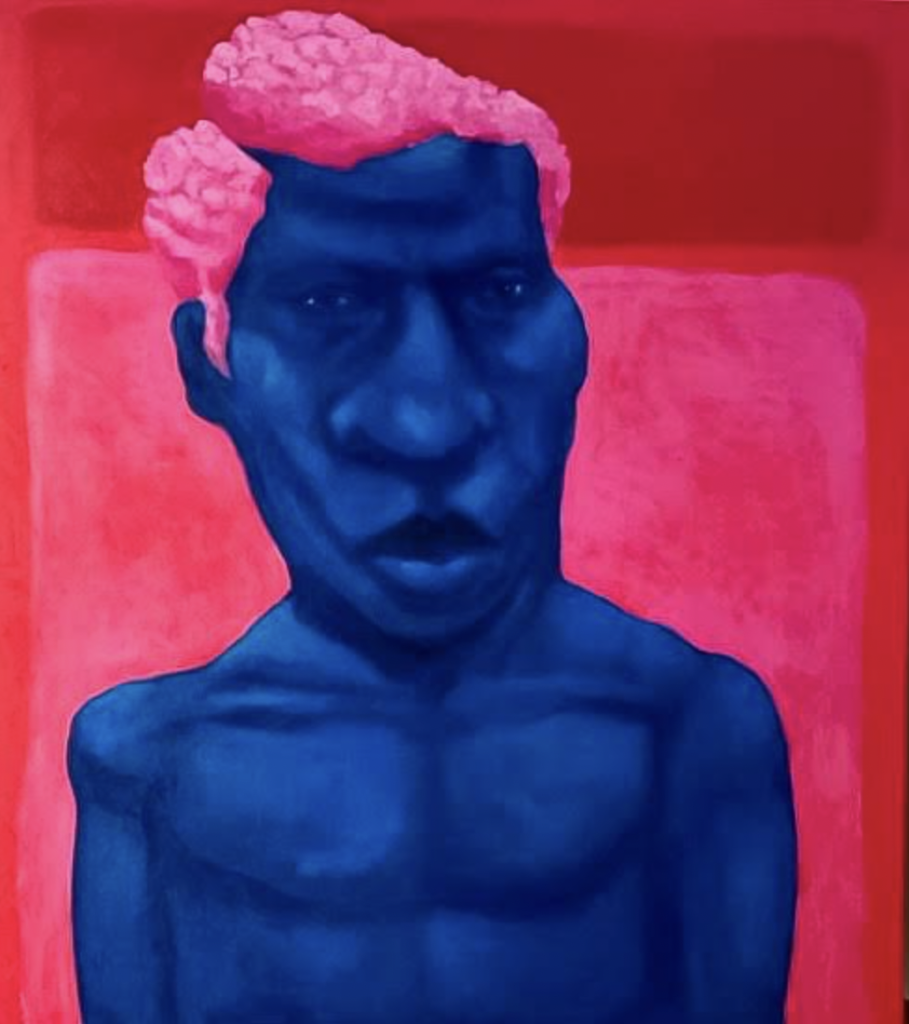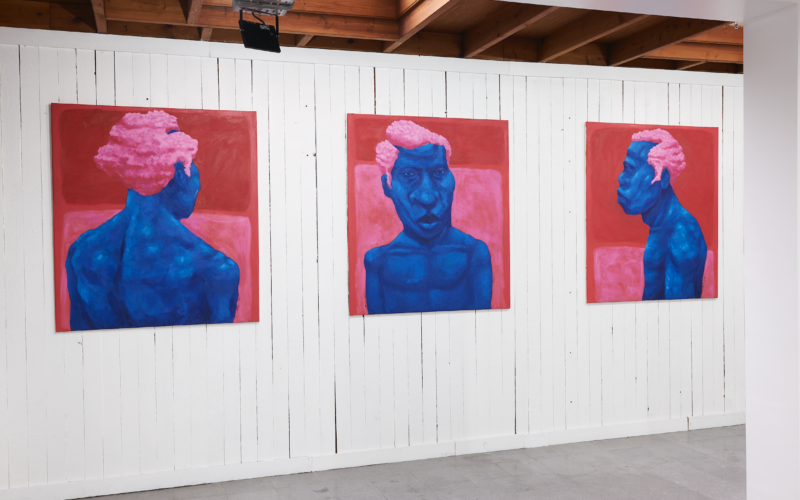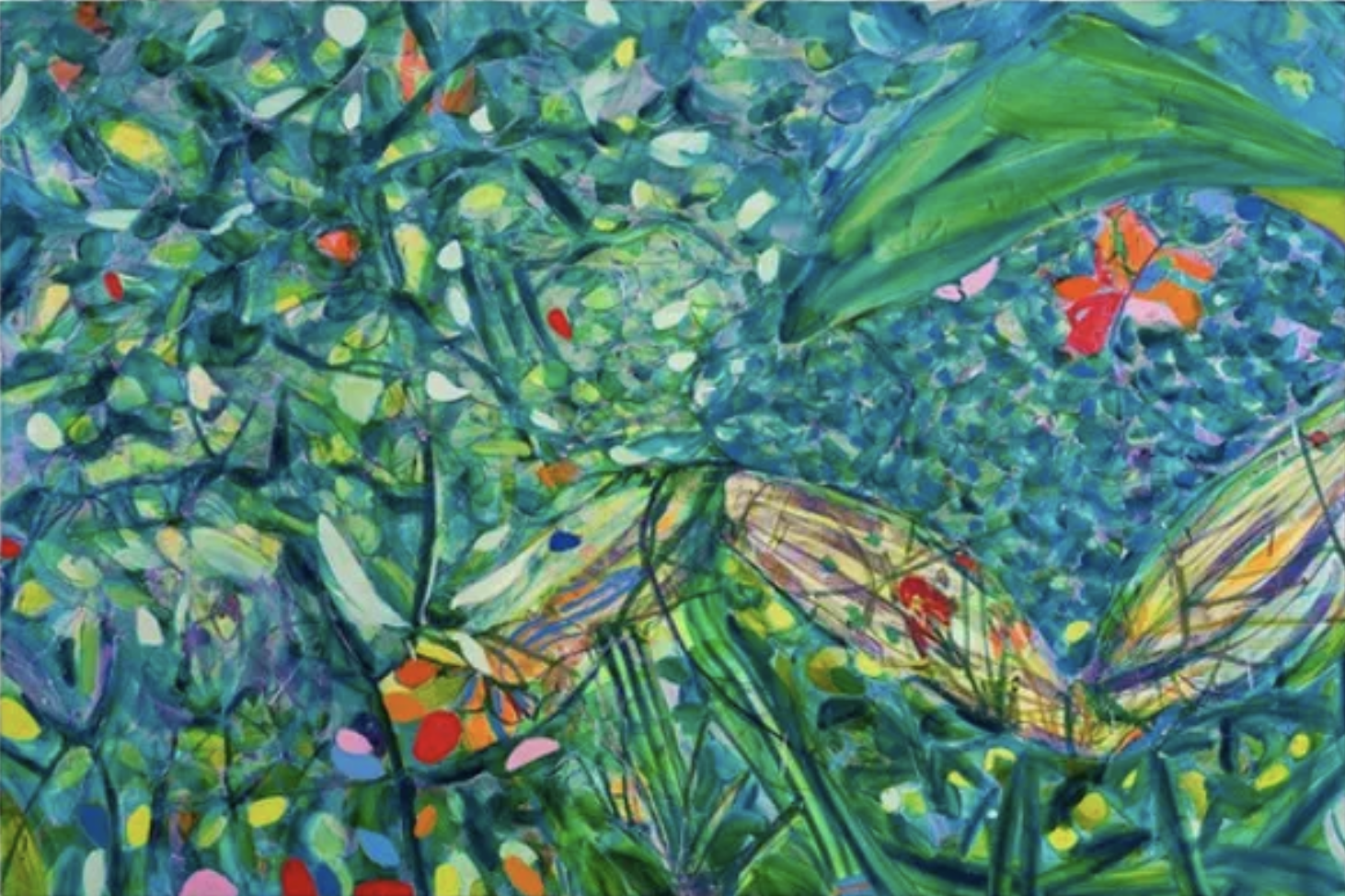2/14/2023 – With over 15 years of professional practice under his belt, Adesina has come to be renowned for his distinct figurative expressions characterized by body dysmorphia, distortion and exaggeration as his visual language. With these elements he strives to bring to the fore of the viewer’s consciousness, salient human issues that includes but are not limited to identity, migration, science and evolution, language, globalization and conflict.
Over the years, Adesina’s works have been well received, exhibiting locally and in international art fairs, institutions and auctions with wide acclaim, spurring the need to take his works even further to a new set of audience.
Hence, A.D Artspace has invited the public to view and experience Adesina’s intriguing visual expressions with this exhibition. Titled Colour of the Coloured: Layered Pigments, this exhibition of paintings which marks the artist’s first solo exhibition in Belgium, features new works built on an existing concept by the artist from the series, “Colour of the Coloured” in which he critically examines racialisation by highlighting the implication of language in a social construct built around skin tone.

In this series, Adesina begins his interrogation with a visual literal interpretation of the word ‘Colour(ed)’, as used in the term ‘people of colour’ – for people of other races that are not Caucasian or White. This series provides a gateway to reflect on the ways in which the phrase has been / is being used to categorise and segregate races based on skin tone, and most times with overt or subtle hint of superiority or inferiority within the colour spectrum, depending on the positional perspective this is being viewed.
Originally coined to refer to the Black race, the connotation of the term ‘coloured’ has expanded to include other people outside of the White race. In spite of the seeming progressiveness perceived as a result of global integration, the politics of skin and identity is very much present and is reflected in various (un)favourable socio-economic policies formed based on racial categorisation in multi-racial societies.
What does it mean to be coloured, to be a person of colour? In a multiracial society, the reality of this stands out. However, in an alternate space composing of only people of colour, what would the measure for racial categorization and to what degree will discrimination thrive or decrease?
With pun intended in both title and visual expression, a variety of bold, vibrant and intense colours are used to emphasise the idea of skin tone in a simplistic sense to draw attention to the issue being addressed. So that one could for instance, see one of his male subjects rendered in pink skin with bright orange nappy hair in a sitting position set against a blue background. The quizzical look of this subject is at once engaging, which may possibly kindle a sense of wonder from the viewer.
Colour of the Coloured: Layered Pigment is an invitation to dissect issues of not only race, but other by-effects of racial politics such as migration, as well as power, and how this is interpreted and experienced by different people of various races around the world on micro and macro levels.
Regarded as an artist with one of the most distinctive figurative expressions in contemporary art coming from the African continent today, Soji Adesina has emerged and settled in a style that is peculiar to him regardless of the medium in which he does this – be it drawing, painting or graphic designing. His works are known for the eccentric ways he conveys his ideas using distorted human features and body dysmorphia caught in such riveting stance that allures the viewer into engaging with his works.
Adesina’s practice has always been themed around the complexity of human behavior and how it influences socio-cultural issues such as identity, language, migration, science and evolution, globalisation, and conflict. In a time where global events are rife with issues of mass migration from different countries to the West, this exhibition is timely as it attempts to expand the grounds for discourse for people deconstruct concepts around identity, how a geographical shift could amplify or quieten the effect of the term ‘coloured people’.










